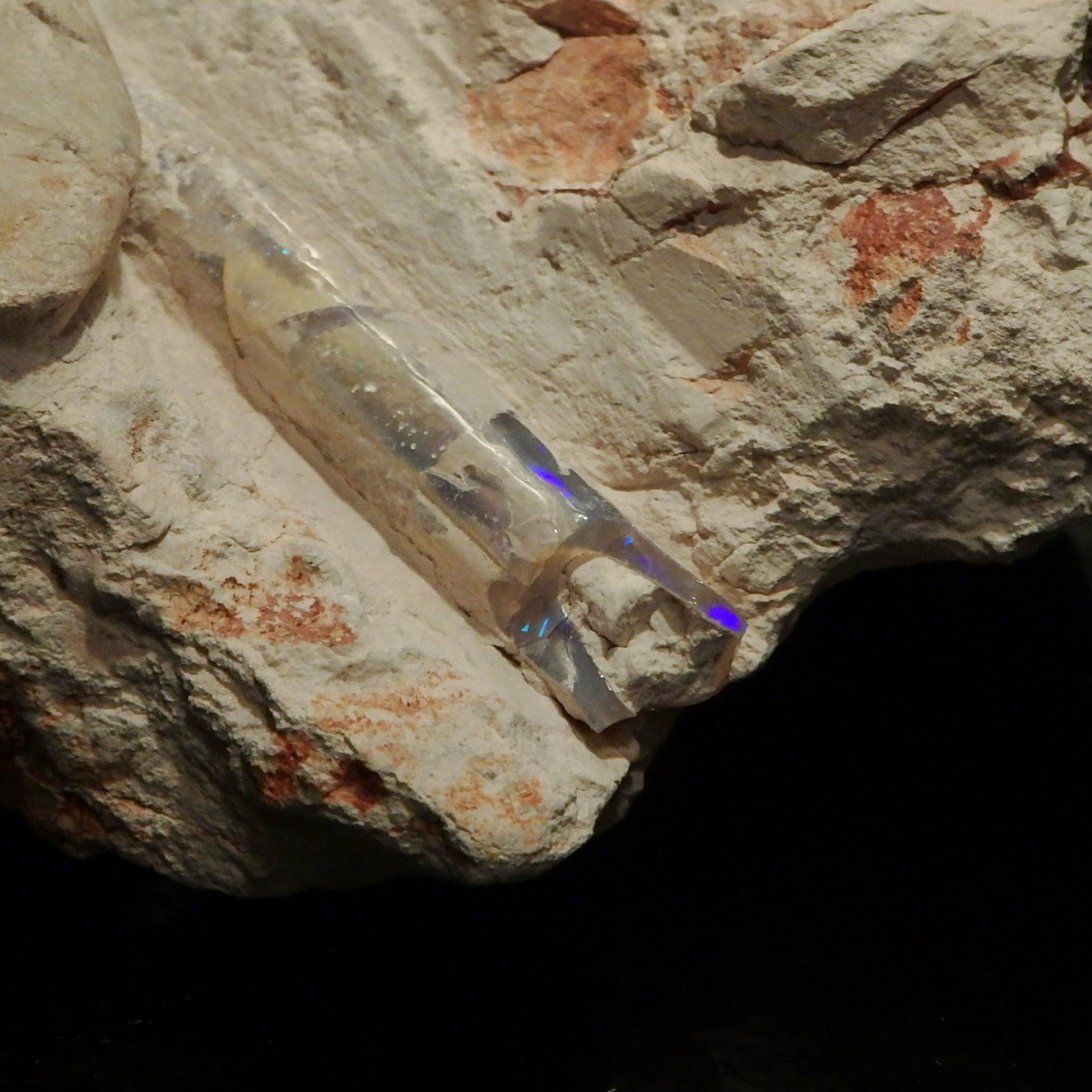
Opal-
there is no precious stone in the world that catches the eye the way these
stones that Shakespeare called the ‘Queen of Gems’ do.

On a continent known for
its mineral wealth, Australia’s national gemstone it seems is not a mineral at
all as it has few of the characteristics true minerals possess (such as a
uniform crystalline structure). Instead Opal is considered a mineraloid, and for
dinosaur fans it could be argued it’s the gemstone that could represent the
Mesozoic.
Opal
requires very specific geological conditions to form and Australia produces
over 95% of the world's opal because in the Late Cretaceous the middle of the
continent sat under a warm, shallow ocean.

The Eromanga Sea lasted for around
80 million years and produced fine sand rich with silica- a strange substance
that can be considered a mineral, but also is produced synthetically and
biologically. This silica rich water seeped deep underground (helping form the
Great Artesian Basin) and filled any void and coated any fossil it
encountered. This silica then took several million years to harden and form opal.

This
isn’t the only way opal forms, only the most common. Sometimes bacteria slowly dissolved away biological material such as leaves and shells and
left behind silica in the exact shape as the original material.
Because
the Eromanga Sea covered such a large distance, the opal it would eventually
produce is as diverse as the locations where it can be found. In the flat, hot
South Australian town of Coober Pedy (where the vast majority of opal is mined)
most of these stones are considered ‘light’ opal and the fossils found here are
almost all marine. Lightning Ridge in NSW is not only the birthplace of Mr.
Crocodile Dundee himself, Paul Hogan, but the most fantastic ‘Black’ opal. Its
fossils seem to suggest the region was a forest with large rivers running down
to the inland sea. Queensland has not only the most productive dinosaur fossil fields in
Australia, but also produces ‘boulder’ opal. Both marine and terrestrial fossils
are found in this location, indicating this part of Queensland might have once
been a series of islands
In
Australia it’s possible to see great examples of all three types, along with a
number of fantastic opalised fossils at the National Opal Collection. This has
two localities, one in Melbourne (which I visited years ago) and the second in
Sydney. Both have free entry and are attached to a large opal showroom where
visitors can purchase their own gemstone to take home.
Though
not the largest museums in the world, they are well presented with both
life-like models of dinosaurs, pterosaurs and the world’s most famous opalised
fossil, Steropodon. These are great to see, but in this museum it’s all about
the opals, and Sydney’s National Opal Museum has plenty to see.
There are the usual opal shells, a few starfish
and the long, tooth-like inner guards from the extinct cephalopods called
belemnites. The museum also has a large number of turtle fossils, along with
crocodile scales and the teeth of large lungfish, all opalised.
The
most famous fossil on display is ‘Nessie’, a near complete juvenile plesiosaur
(possibly a pliosaur) found at Andamooka, South Australia, in 1968 and has been
placed under Australia’s National Heritage Laws. 50% of Nessie’s fossils have
opalised, and in the marine reptiles stomach were discovered gastroliths,
belemnite guards and fish bones- many of which had opalised too.

Though
far from complete, the museum hosts a large number of opalised dinosaur fossils
as well. Amongst the ribs, vertebra and a possible dinosaur claw are a number
of large theropod teeth. These were from a medium size carnivore, though due to
the nature of the opalisation these fossils do not contain many details to let us work out exactly what sort of theropod they came from.
Though
far from the only museum hosting opalised fossils (Bathurst, the National
Dinosaur Museum and the South Australian
Museum has opals on display), Australia’s National Opal Collection contains a number of great
specimens and well worth a look.












